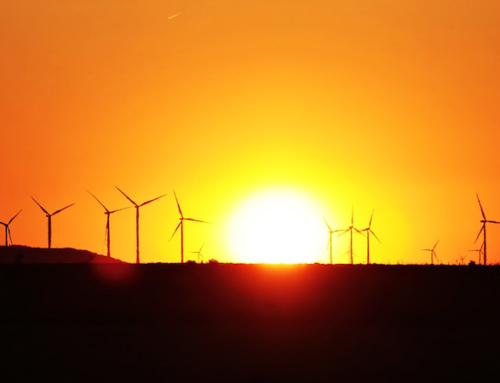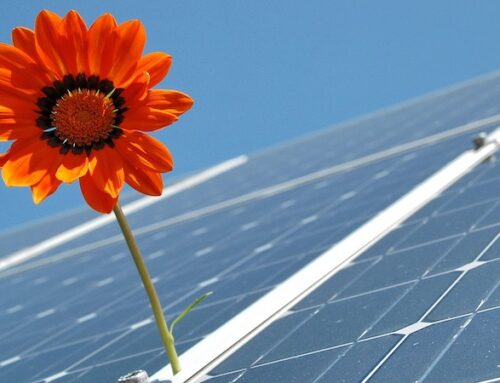Foreign Investment Fuels Colombia’s Green Energy Revolution
January 2, 2025
(Oilprice.com) Colombia is a major producer of oil and gas and is steadily developing its renewable energy industry. In 2016, the South American state launched its Energy Plan 2050, aimed at diversifying the country’s energy mix to include wind power plants, solar PV, and geothermal energy generation, and ensure a reliable energy supply in the coming decades.
In 2023, Colombia’s energy mix consisted of 41.2 percent oil, 22.8 percent natural gas, 11.2 percent coal, 12.5 percent biofuels and waste, and 12 percent hydropower, according to the International Energy Agency (IEA). However, it produces around 75 percent of its electricity from renewable energy. The country’s energy demand has grown rapidly in recent years, by around 95 percent between 2000 and 2023, demonstrating the need for the expansion of Colombia’s renewable energy capacity to meet this need.
In October, Colombia launched a new $40-million investment plan for an energy transition, aimed at shifting away from a reliance on fossil fuels. The plan includes financing for nature conservation, such as ecotourism, sustainable agriculture, and ecosystem restoration. It also covers clean energy projects and aims for the electrification of transport.
The Environment Minister, Susana Muhamad, said the plan would be similar to the donor-backed Just Energy Transition Partnerships (JETPs) seen in South Africa, Vietnam, Indonesia and Senegal. The government said it was in discussions with the U.K., Germany, Canada, and the EU, as well as the Inter-American Development Bank, about potential funding options. Muhamad stated, “We are on the way to consolidating a donor roundtable that will allow us to achieve an important financial package for the country.”
Since taking office in 2022, left-wing President Gustavo Petro pledged to transition away from oil and gas, which Colombia has long relied on for both power and revenue. Petro has blocked new oil-and-gas drilling and spoken publicly about his aims to reduce production in favour of renewable alternatives. This is seen by many as controversial for a country that is the fifth-largest exporter of coal and an oil and gas producer with large untapped reserves. At the COP28 climate conference in 2023, Petro became the first leader of a large country and the first fossil fuel-producing state to endorse a call for a Fossil Fuel Non-Proliferation Treaty, an idea that had previously only been supported by civil society and small island nations.
In 2023, the Colombian government made the groundbreaking move to ban new oil and gas licenses. Irene Vélez, the minister for mines, stated at the World Economic Forum, “We have decided not to award new oil and gas exploration contracts, and while that has been very controversial, it’s a clear sign of our commitment in the fight against climate change… This decision is absolutely urgent and needs immediate action.” However, the government has attempted to revive some existing oil and gas projects to keep developing the industry without the need to approve new licenses.
Meanwhile, Colombia has been expanding several of its renewable energy sectors, including clean hydrogen, as well as wind, solar and hydro- power. In April, the World Bank and the Asociación Hidrógeno Colombia met to discuss the potential for using some of the country’s low-cost solar and wind energy to produce clean hydrogen to power highly polluting heavy industries, such as cement, steel, mining, and chemicals. In 2023, the World Bank approved a $150 million loan to promote Chile’s clean hydrogen development, and it expects to help Colombia develop its hydrogen industry through a similar funding scheme.
In October, Colombia’s Energy Ministry announced it had received interest from seven foreign and two local companies in an offshore wind power project, with formal bids expected within the first six months of 2025. The companies include Colombian state oil firm Ecopetrol, the power firm Celsia, Spain’s BlueFloat Energy, Denmark’s Copenhagen Infrastructure Partners, Belgium’s Jan De Nul and DEME, China’s PowerChina and China Three Gorges, and Britain’s Dyna Energy, according to the Ministry. “The aim of this first round is to assign maritime areas in which can be installed between 1,000 and 3,000 megawatts,” the Ministry said in a statement. “This process would be the first in Latin America for the generation of offshore wind power,” it added.
In February, the government awarded new licenses for electricity-generating projects, aiming to increase capacity by 4,489 MW in 2027 and 2028. The Ministry of Mines and Energy assigned 99 percent of the new capacity to solar plants and the remaining 1 percent to thermal biomass plants, repairing a gas plant, building a biomass plant, and expanding a smaller biogas plant. The Ministry said that this move will mean that solar power overtakes thermal energy capacity to contribute 26 percent of the country’s electricity.
Colombia is working to diversify its energy mix, supported by national policies aiming for a move away from a reliance on fossil fuels in favour of a green transition under President Petro. The introduction of a $40-million investment plan for an energy transition is expected to attract higher levels of foreign funding to drive the development of Colombia’s green energy capacity. Meanwhile, the ban on new oil and gas exploration licenses will support a gradual move away from fossil fuels.
Search
RECENT PRESS RELEASES
Related Post




